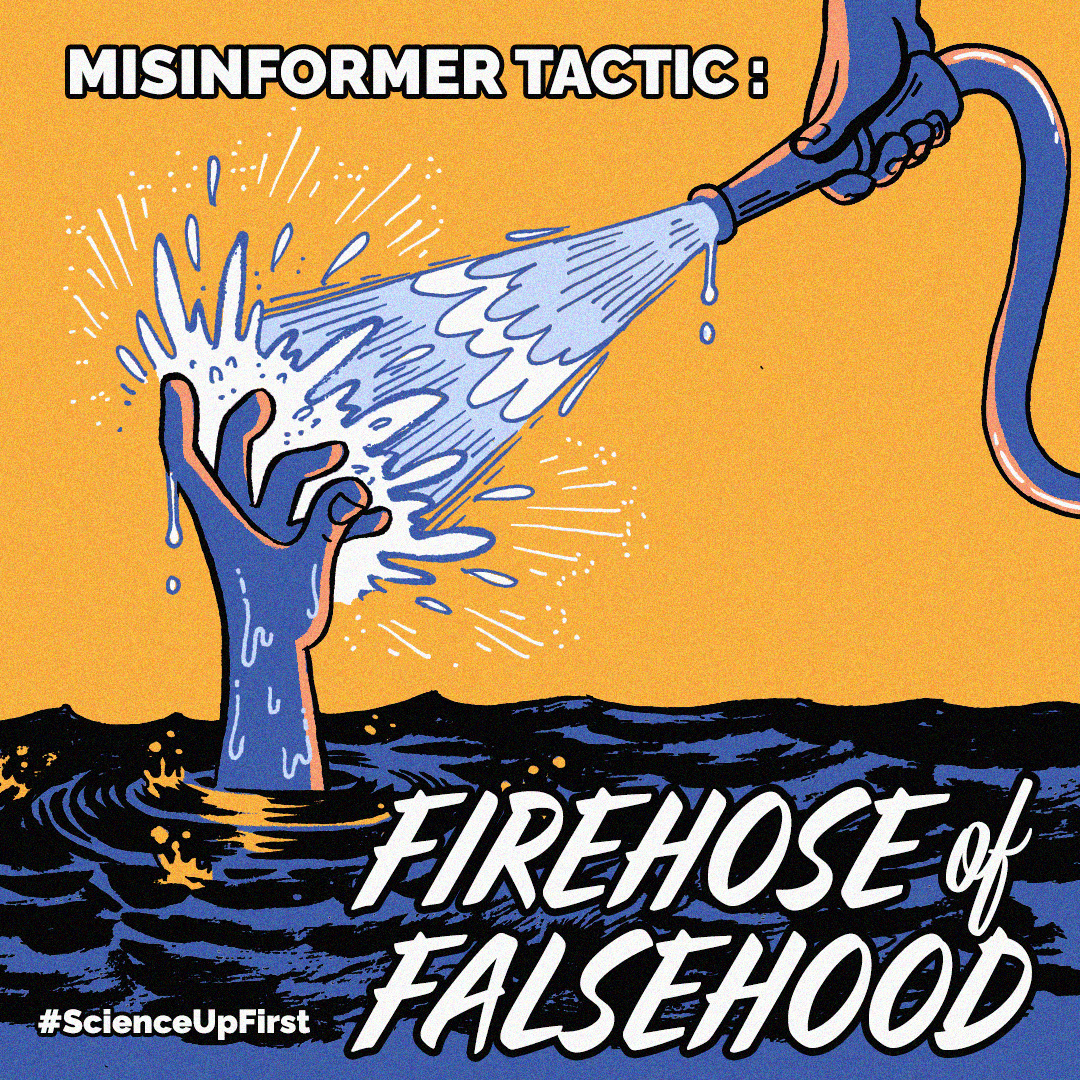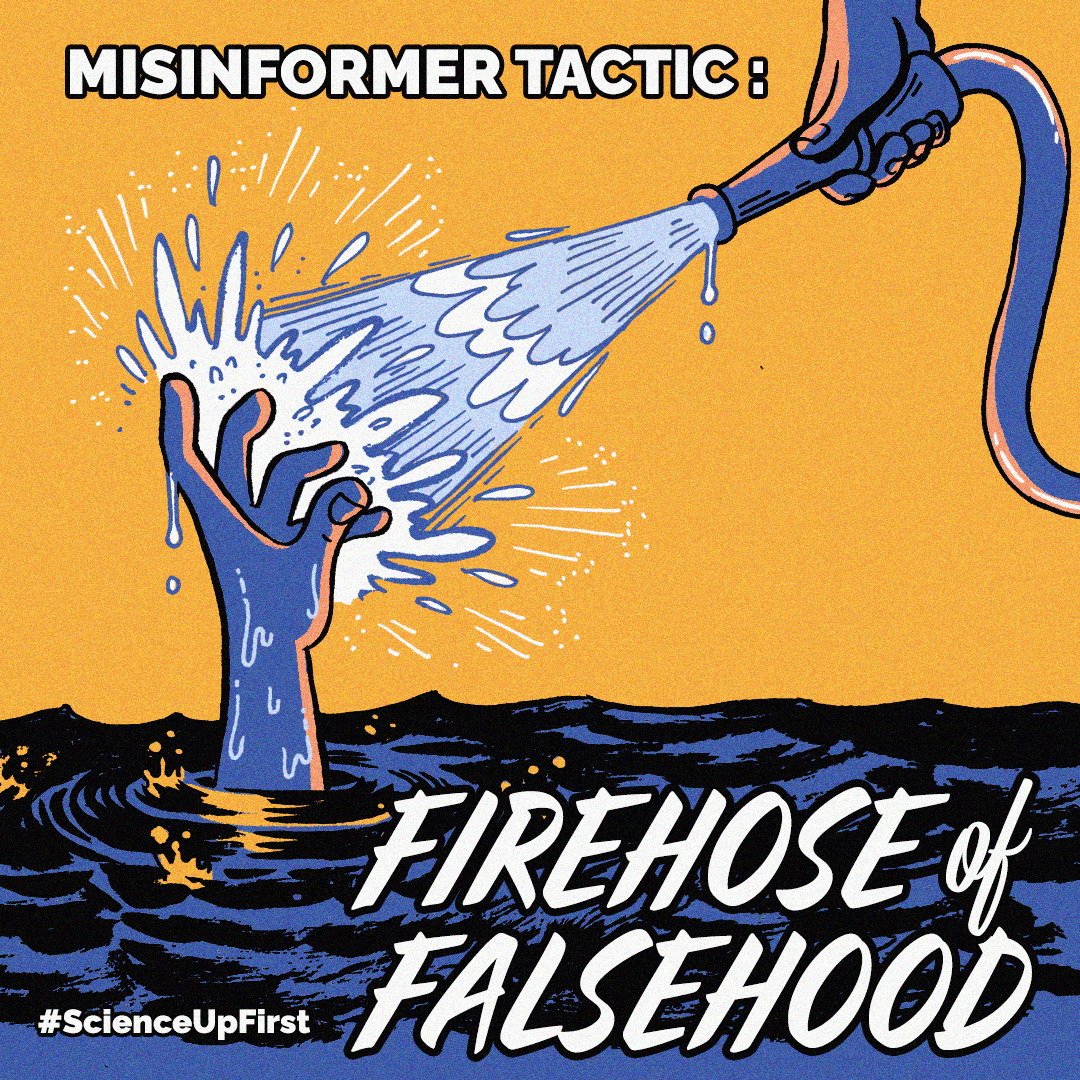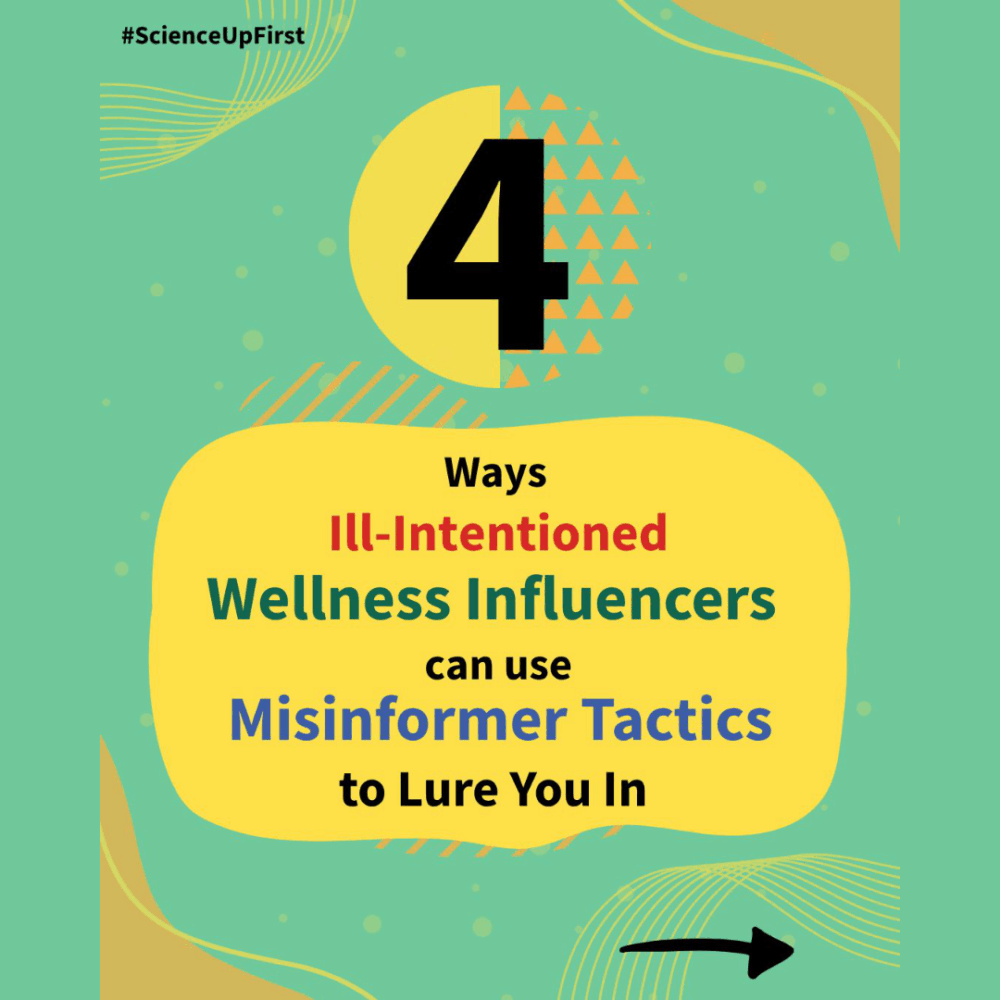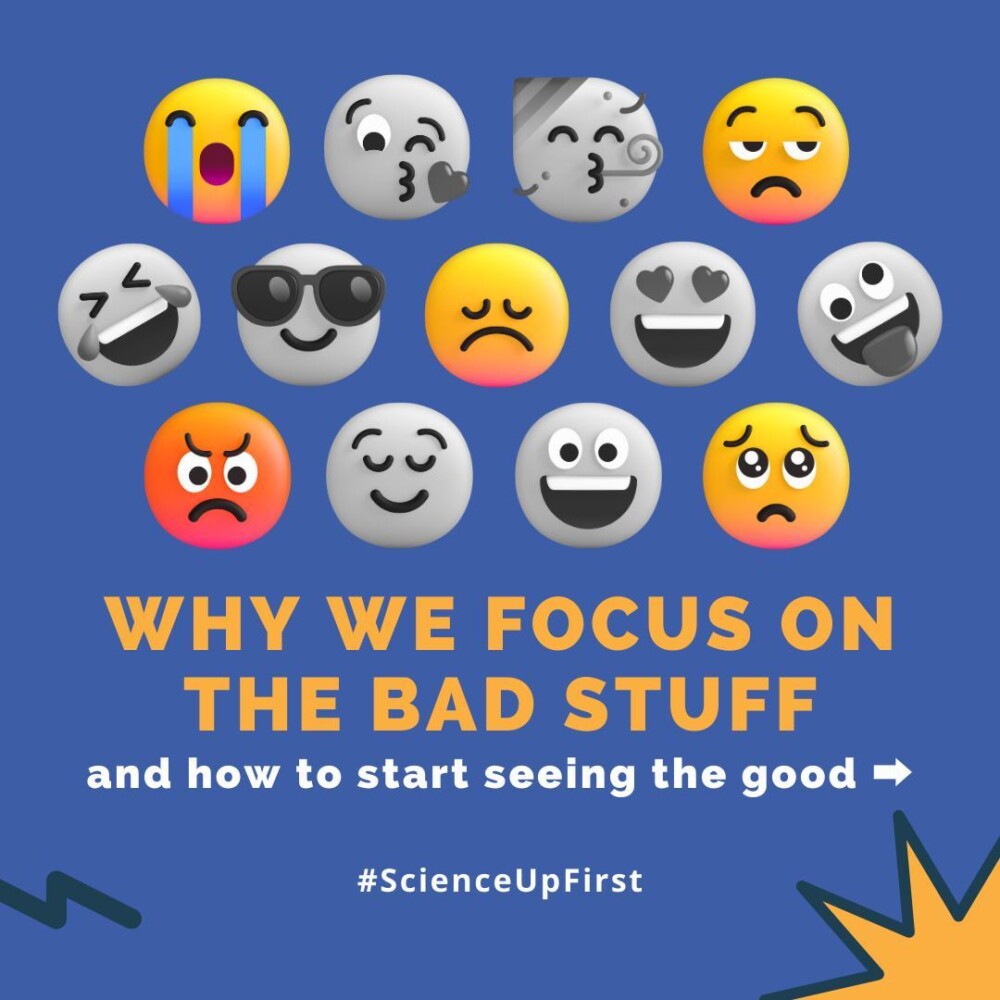
Just because a story is repeated does not make it true.
Firehose of falsehood, or firehosing, is a propaganda technique that aims to confuse and overwhelm the audience with continuous, rapid, and repetitive messaging over multiple platforms. The messaging is often false, or composed of half-truths and lacks consistency and objectivity (1).
This tactic is used by Russian president Vladimir Putin (1), U.S. president Donald Trump (2), but also by anti-vaccine groups to spread misinformation about vaccines (3).
It works because it uses a number of varied sources to spread its lies (4,5), as well as tapping into our needs for conformity (6). When you see something being shared by multiple sources, you are more likely to think it is true (1). With firehosing, the lies don’t even have to be believable because the goal is not to persuade, but to bombard people with so much information they become too overwhelmed to fact-check everything (3).
The best way to counter-attack firehosing is to be aware of the tactic (3), keep reporting false content to disrupt the disinformation’s flow (3), and share evidence-based information instead of getting into comment wars refuting misinformation (1).
Many thanks to Jordan Collver for collaborating with us on this project! Check out his work on his website (jordancollver.myportfolio.com) and on Twitter (@JordanCollver)
- The Russian “Firehose of Falsehood” Propaganda Model
- ‘Firehose of falsehood:’ How Trump is trying to confuse the public about the election outcome
- Firehosing: the systemic strategy that anti-vaxxers are using to spread misinformation
- Information utility and the multiple source effect
- Trusting expert- versus user-generated ratings online: The role of information volume, valence, and consumer characteristics
- Discrediting in a Message Board Forum: The Effects of Social Support and Attacks on Expertise and Trustworthiness
Share our original Bluesky Post!
Same misinformation repeated again and again? That’s part of the firehose of falsehood tactic. Learn why this propaganda technique works so well here 👇 www.scienceupfirst.com/project/misi… #ScienceUpFirst
— ScienceUpFirst (@scienceupfirst.bsky.social) October 16, 2025 at 11:51 AM
[image or embed]
View our original Instagram Post!




